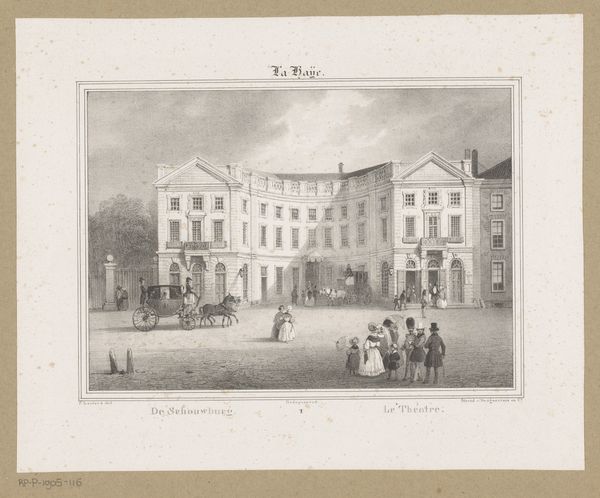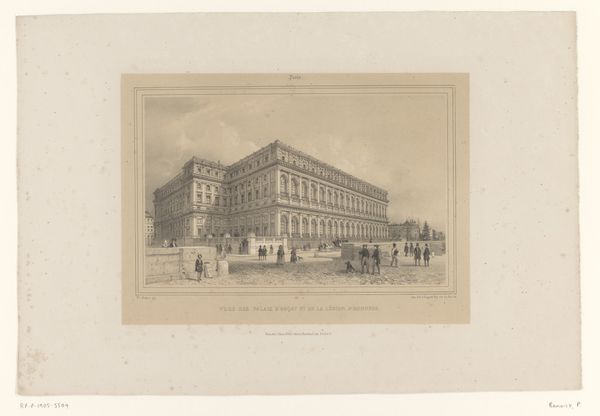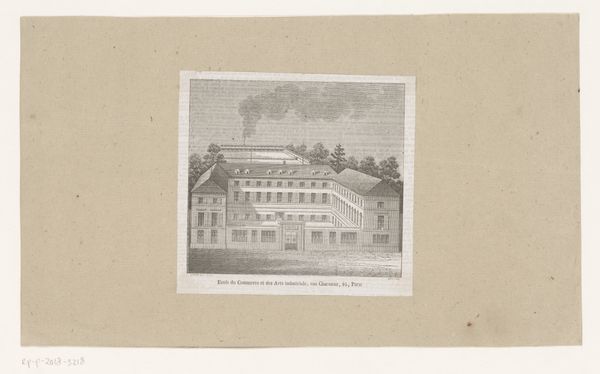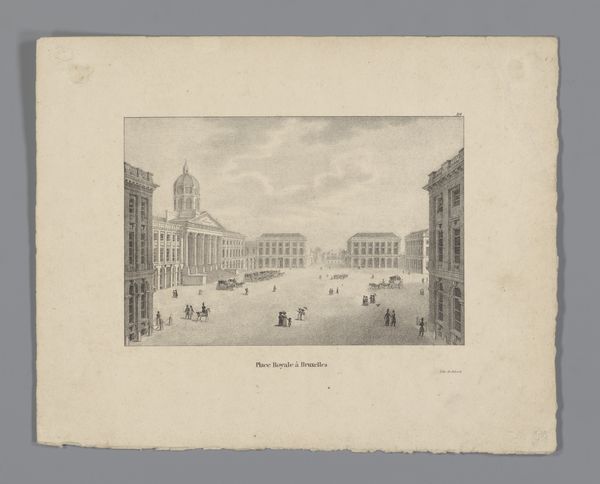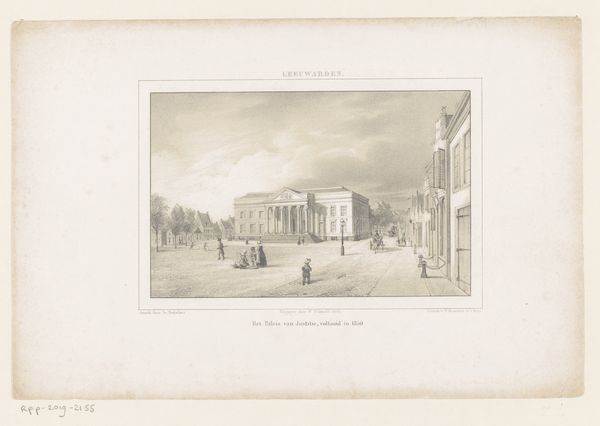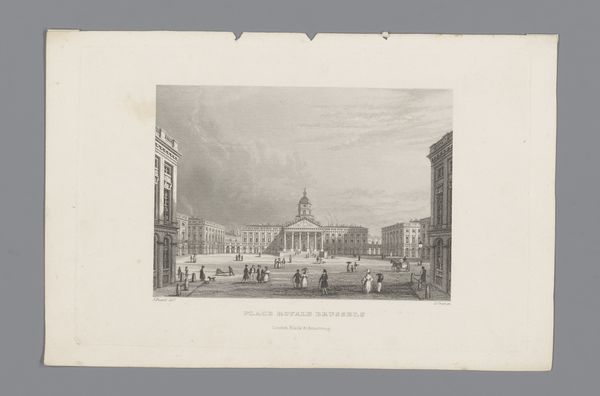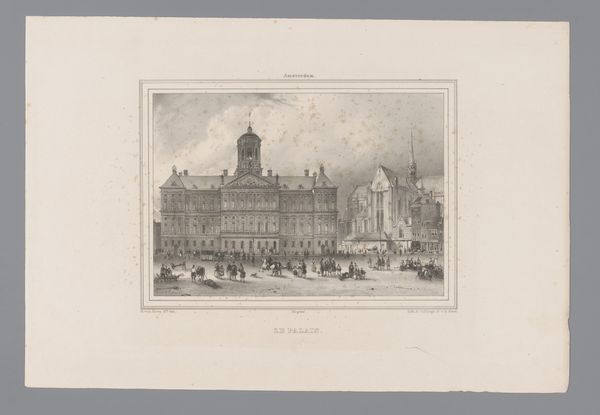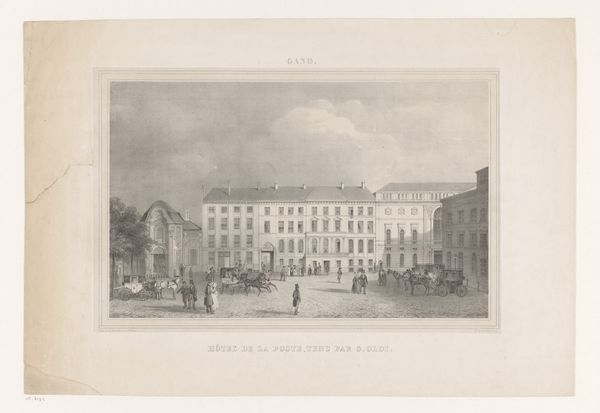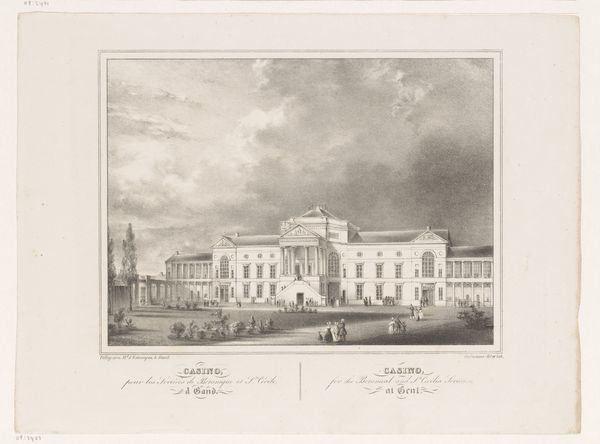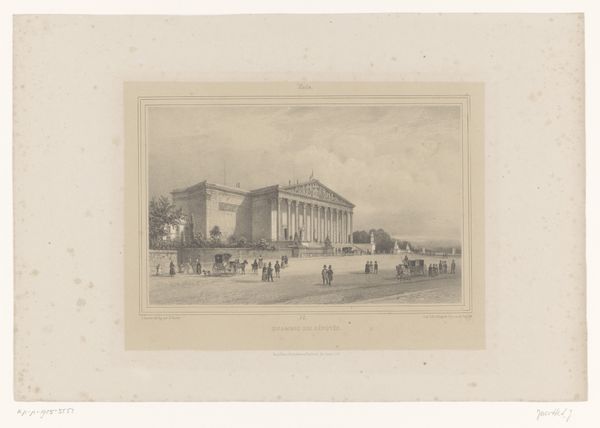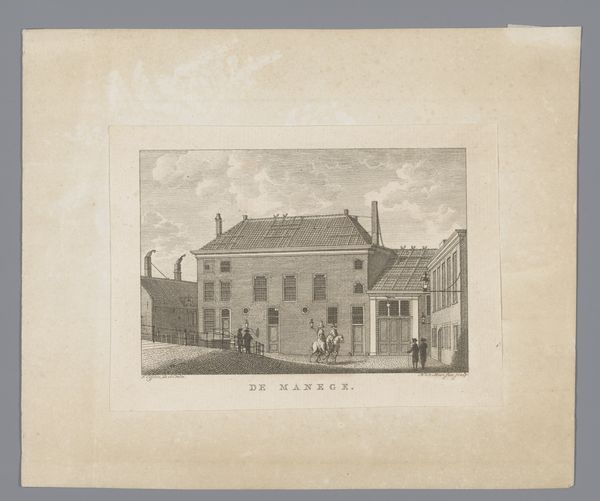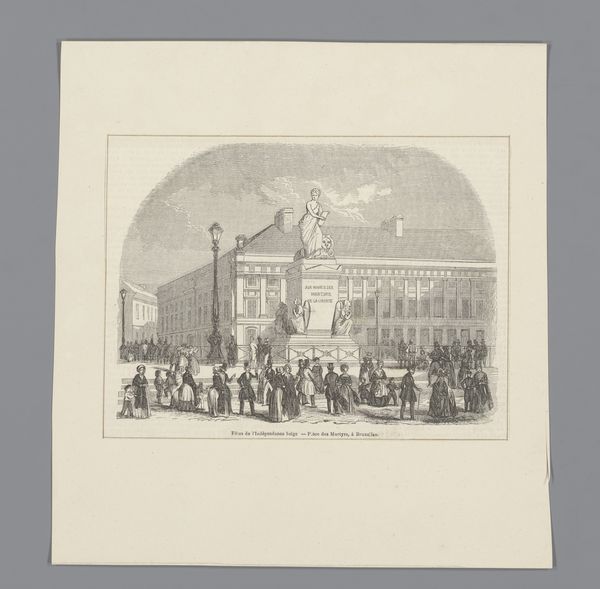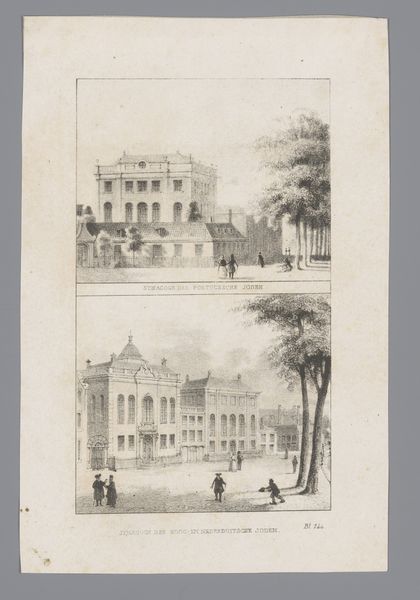
drawing, paper, ink
#
drawing
#
paper
#
ink
#
romanticism
#
cityscape
#
genre-painting
Dimensions: height 290 mm, width 425 mm
Copyright: Rijks Museum: Open Domain
Curator: This is "Gezicht op de Leidse poort en schouwburg in Amsterdam" by Huib van Hove Bz, dating from 1835. It’s currently held at the Rijksmuseum. Instantly, I am drawn to its atmospheric qualities. The scene feels almost dreamlike, bathed in a soft light that lends a certain melancholy to the cityscape. Editor: Indeed, the greyscale tones enhance the image’s texture and the way it documents a burgeoning area in the heart of the city. The drawing is constructed with ink on paper; the detail reveals how social mobility was literally shaping Amsterdam during that period. Note how the figures are depicted against these emerging civic spaces. Curator: Precisely! The choice of portraying a theatre is significant. What did this building represent within the city's cultural fabric? We could analyze this building's significance in how it defined class dynamics. Who occupied those seats and carriages? Was going to the theatre an act of political or social transgression? These questions prompt broader investigations. Editor: Beyond the elite circles, though, I wonder about the artist's access to materials, especially the quality of the ink and paper which clearly supported his exacting craft. Did the rise of the Dutch merchant class influence how images like these were commissioned, reproduced and then circulated in the wider art market? How did those economic considerations allow van Hove to produce this specific image? Curator: Those economic frameworks clearly impacted what art was produced. As our institutions begin reassessing art histories and cultural value, thinking about production costs is not divorced from broader dialogues on privilege. This landscape portrays societal change; the work itself manifests class itself. Editor: Well, considering both artistic intention and also the work and resources invested in creating this work sheds a greater understanding on the nuances that give texture and complexity to the image. Curator: Indeed, considering van Hove’s vantage and choices encourages critical assessment about that place in time. Hopefully it challenges assumptions, prompts questions about access, representation, and invites consideration of alternative narratives embedded in this historical moment.
Comments
No comments
Be the first to comment and join the conversation on the ultimate creative platform.
